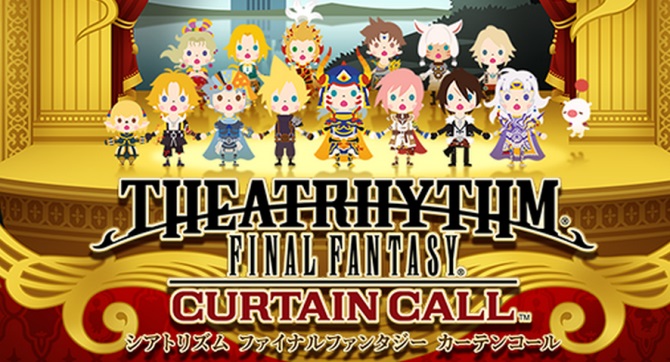The latest Wii U/3DS-specific UK software sales are as follows:
Wii U
1. Super Mario 3D World – Nintendo
2. New Super Luigi U – Nintendo
3. New Super Mario Bros. U – Nintendo
4. LEGO Marvel Super Heroes – Warner Bros. Interactive
5. Rayman Legends – Ubisoft
6. Zelda: Wind Waker HD – Nintendo
7. Wii Party U – Nintendo
8. LEGO City: Undercover – Nintendo
9. Nintendo Land – Nintendo
10. Just Dance 2014 – Ubisoft
3DS
1. Zelda: A Link Between Worlds – Nintendo
2. Pokemon X – Nintendo
3. Pokemon Y – Nintendo
4. Animal Crossing: New Leaf – Nintendo
5. Professor Layton and the Azran Legacy – Nintendo
6. Mario Kart 7 – Nintendo
7. LEGO Marvel Super Heroes – Warner Bros. Interactive
8. Luigi’s Mansion 2 – Nintendo
9. LEGO City Undercover: The Chase Begins – Nintendo
10. Super Mario 3D Land – Nintendo
Source: Chart-Track
The latest issue of V-Jump confirms several new characters for Theatrhythm Final Fantasy: Curtain Call. Zach from Final Fantasy VII, Y’shtola from Final Fantasy XIV, plus Yuna, Rikku, and Paine from Final Fantasy X-2, and a second version of Lightning from Lightning Returns: Final Fantasy will be included. Each character can be unlocked by collecting crystal fragments.
V-Jump also reveals a new track for Curtain Call – Advent: One Winged Angel from Final Fantasy VII: Advent Children.
Lastly, the game will include a search function so that players can look for songs by name and create a playlist of favorite tunes.
Binari Sonori worked on the localization for Bravely Default, according to Square Enix. The company has also announced who voiced each of the game’s prominent characters:
Spike Spencer – Ringabel
Erin Fitzgerald – Agnes Oblige
Cassandra Lee Morris – Edea Lee
Stephanie Sheh – Airy
Bryce Papenbrook – Tiz Arrior
Bill Black directed the English voices for Bravely Default. His previous works include World of WarCraft: The Burning Crusade, Neverwinter Nights, Lineage II: The Chaotic Chronicles, and Demon’s Score.
CastleStorm will launch on Wii U on December 26, Zen Studios has announced. That date applies to both North America and Europe.
Zen Studios outlined how CastleStorm takes advantage of the GamePad in a press release published today:
CastleStorm makes full use of the Nintendo Wii U Gamepad, which mirrors the action being displayed on the TV allowing the game to be fully playable on the GamePad without a TV. All functionality is available without touch as well, using the sticks and action buttons. In local multiplayer, one player uses the Pro Controller and looks at the TV, the other player uses the GamePad and plays on the Gamepad screen.
CastleStorm will be available for $9.99 / €9.99.
Source: Zen Studios PR












